A short visit to the new and old Basilicas of the Virgin of Guadalupe in México City
Una corta visita a las nueva y antigua Basílicas de la virgen de Guadalupe en Ciudad de México
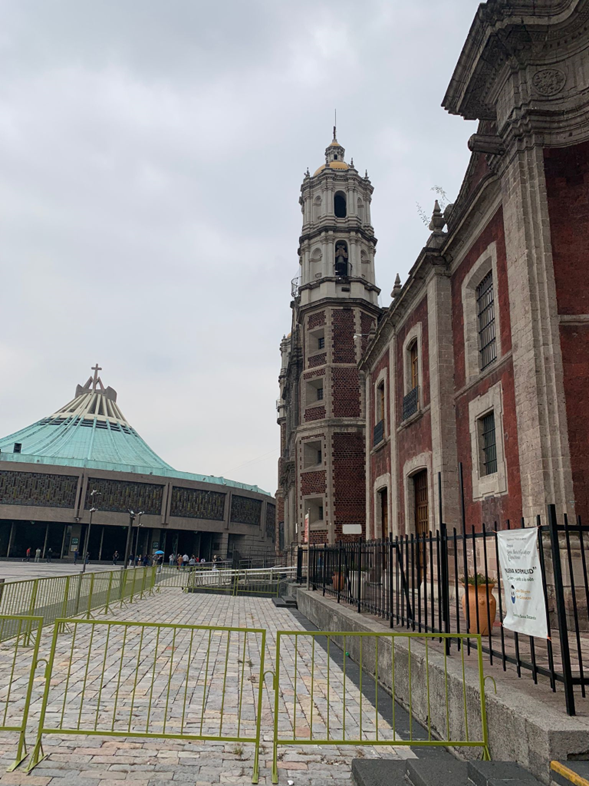 Side view of the old and new churches of Guadalupe (Vista lateral de la antigua y nueva iglesias de Guadalupe). Photo taken by Darwin Palacios
Side view of the old and new churches of Guadalupe (Vista lateral de la antigua y nueva iglesias de Guadalupe). Photo taken by Darwin Palacios
Dear friends of this community, today I have the pleasure and honor of making a short visit, together with my son-in-law Darwin Palacios, author of the photos, who recently visited this metropolis, two iconic churches in Mexico City, it is about of the two versions (the new and the old) of the Basilica of Guadalupe, built on the Cerro del Tepeyac, where it is said that the virgin appeared as a young woman with mestizo features, to the Indian Juan Griego, who was named saint in 1990 by Pope John Paul II, leaving his image captured on the cloth (ayate) carried by the indigenous. Since then, it is considered a place par excellence for the pilgrimage of the worshipers of the Virgin and a tourism site.
Estimados amigos de esta comunidad, hoy tengo el placer y el honor de realizar una pequeña visita, conjuntamente con mi yerno Darwin Palacios, autor de las fotos, quien visitara a esta metrópolis recientemente, a dos iglesias icónicas de la Ciudad de México, se trata de las dos versiones (la nueva y la antigua) de la Basílica de Guadalupe, edificadas en el Cerro del Tepeyac, lugar donde se afirma que se le apareció la virgen, como una joven con rasgos mestizos, al indio Juan Griego, quien fue nombrado santo en 1990 por el Papa Juan Pablo II, dejando plasmada su imagen en la tela (ayate) que portaba el indígena. Desde entonces, es considerado un lugar por excelencia para el peregrinaje de los cultores de la virgen y sitio de turismo.
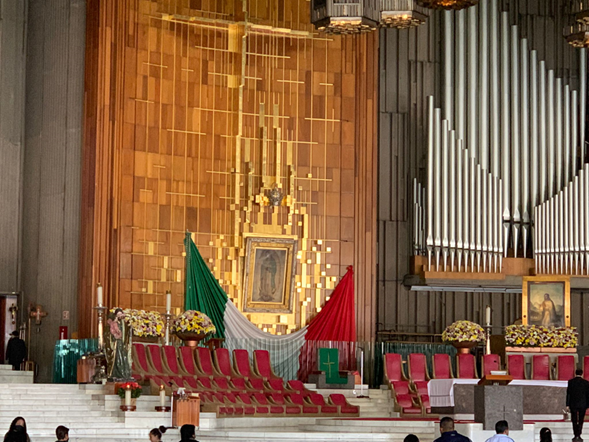 Main altar of the Basilica with the image of the Virgin of Guadalupe (Altar mayor de la Basílica con la imagen de la virgen de Guadalupe). Photo taken by Darwin Palacios
Main altar of the Basilica with the image of the Virgin of Guadalupe (Altar mayor de la Basílica con la imagen de la virgen de Guadalupe). Photo taken by Darwin Palacios
The original church dating from the 17th century, designed and built by the architect Pedro de Arrieta, was closed for many years due to the instability resulting from being built on seismic terrain, as is the whole of Mexico City. The facade of this ancient church is truly exquisite, with 4 octagonal towers and its corners lined with Talavera tile mosaics. (Data taken from https://www.turismomexico.es/mexico-df-ciudad-de-mexico/basilica-de-virgen-guadalupe/)
La iglesia original que data del siglo XVII, proyectada y construida por el arquitecto Pedro de Arrieta, estuvo cerrada por muchos años debido a la inestabilidad producto de encontrarse levantada en un terreno sísmico, como lo es toda la Ciudad de México. La fachada de esta ancestral iglesia es verdaderamente exquisita, con 4 torres octagonales y con sus esquinas tapizadas con mosaicos de azulejos de Talavera. (Datos tomados de https://www.turismomexico.es/mexico-df-ciudad-de-mexico/basilica-de-virgen-guadalupe/)
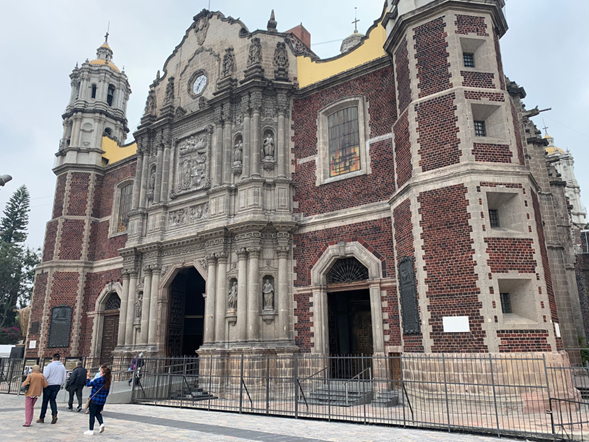 Facade of the old church (Fachada de la antigua iglesia). Photo taken by Darwin Palacios
Facade of the old church (Fachada de la antigua iglesia). Photo taken by Darwin Palacios
In 1974 a modern church was built next to the old basilica, where the "ayate" is currently located to be seen and venerated by the thousands of parishioners who visit it daily. To alleviate the seismic problem of the land, the new structure has a strong cement shell as the body of the Basilica, which consists of a "reinforcement of 344 control piles", the work was made by engineer Manuel González Flores. The roof of the church is covered with copper, which produces that color typical of the oxidation of that metal.
En 1974 se construyó una moderna iglesia al costado de la antigua basílica, donde en la actualidad se encuentra el “ayate” para ser visto y venerada por los miles de feligreses que la visitan a diario. Para paliar el problema sísmico del terreno, la nueva estructura cuenta con un fuerte caparazón de cemento como cuerpo de la Basílica, que consta con un “refuerzo de 344 pilotes de control”, obra del ingeniero Manuel González Flores. El techo de la iglesia está recubierto con cobre lo que produce ese color propio de la oxidación de ese metal.
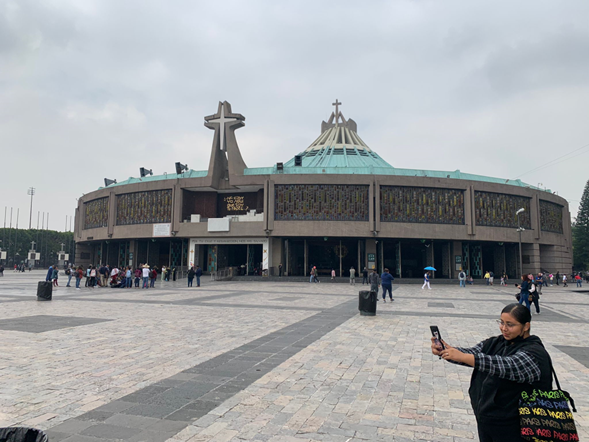 Panoramic view of the new Basilica of the Virgin of Guadalupe (Panorámica de la nueva Basílica de la virgen de Guadalupe). Photo taken by Darwin Palacios
Panoramic view of the new Basilica of the Virgin of Guadalupe (Panorámica de la nueva Basílica de la virgen de Guadalupe). Photo taken by Darwin Palacios
This new architectural structure in a round shape, lacking columns inside, with a gigantic cross in the center of the atrium, allows the 50 thousand people, which constitutes the capacity of the church, to see the image of the "Mexican virgin" from any point of the building. To obtain sunlight, the church was equipped with stained glass windows of various colors that allow a beautiful view of the temple; works by artists such as Juan Correa, José de Alzibar, Gonzalo Carrasco, among others, can be seen inside. The church was built in two years (1974-76) according to the project carried out by a group of architects and engineers headed by the architect Pedro Ramírez Vázquez.
Esta nueva estructura arquitectónica en forma redonda, carente de columnas en su interior, con una gigantesca cruz en el centro del atrio, permite que las 50 mil personas, que constituye el aforo de la iglesia, puedan ver la imagen de la “virgen mexicana” desde cualquier punto de la edificación. Para obtener luz solar se dotó a la iglesia de vitrales de diversos colores que permiten una vista hermosa del templo, obras de artistas como Juan Correa, José de Alzibar, Gonzalo Carrasco, entre otros, se pueden apreciar en su interior. La iglesia fue construida en dos años (1974-76) según el proyecto realizado por un grupo de arquitectos e ingenieros encabezados por el arquitecto Pedro Ramírez Vázquez.
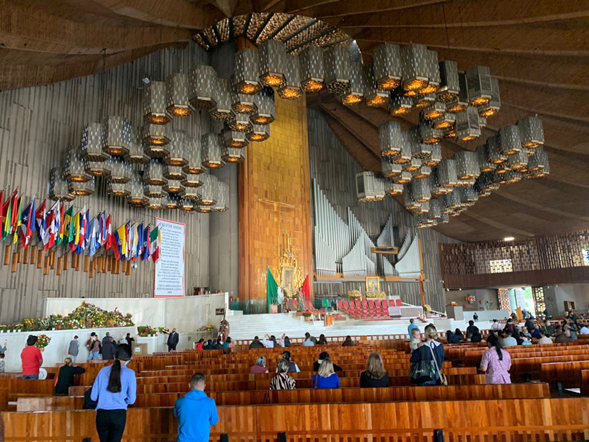 Interior of the church, where you can see its main altar, on its right side you can see the organ and above the modern ceiling (Interior de la iglesia, donde se puede apreciar su altar mayor, a su costado derecho se observa el órgano y arriba el moderno techo). Photo taken by Darwin Palacios
Interior of the church, where you can see its main altar, on its right side you can see the organ and above the modern ceiling (Interior de la iglesia, donde se puede apreciar su altar mayor, a su costado derecho se observa el órgano y arriba el moderno techo). Photo taken by Darwin Palacios
As can be read in several sources "the cover of the circular temple is loaded with aesthetic symbology, since it is an allusion to the "cloak of the Virgin"", contrast https://www.turismomexico.es/mexico-df-ciudad- of-mexico/basilica-of-virgen-guadalupe/ Its impressive view due to its size and splendor makes feel , as my son-in-law told me, the religious force that emanates from it
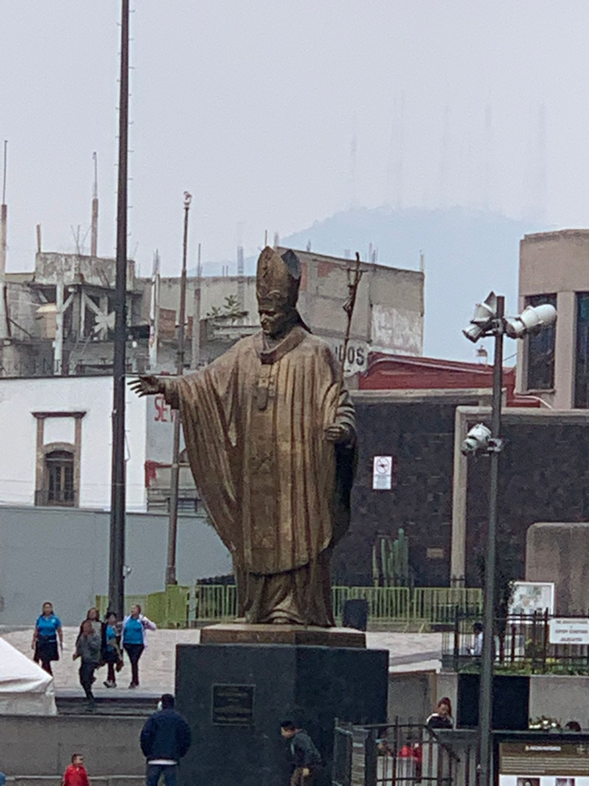 The Monument to Pope John Paul II, is located in the square of the Basilicas (El Monumento al Papa Juan Pablo II, se encuentra en la plazoleta de las Basílicas). Photo taken by Darwin Palacios
The Monument to Pope John Paul II, is located in the square of the Basilicas (El Monumento al Papa Juan Pablo II, se encuentra en la plazoleta de las Basílicas). Photo taken by Darwin Palacios
In the square that unites all the buildings, in front of the two churches, remodeled in 1950, when the so-called Atrium of the Americas was added, there is a statue of Pope John Paul II in memory of his visits to the Basilica.
En la plazoleta que une todas las edificaciones, frente a las dos iglesias, remodelada en 1950, cuando se le agregó el llamado Atrio de las Américas, se encuentra una estatua del Papa Juan Pablo II en recuerdo a sus visitas a la Basílica.
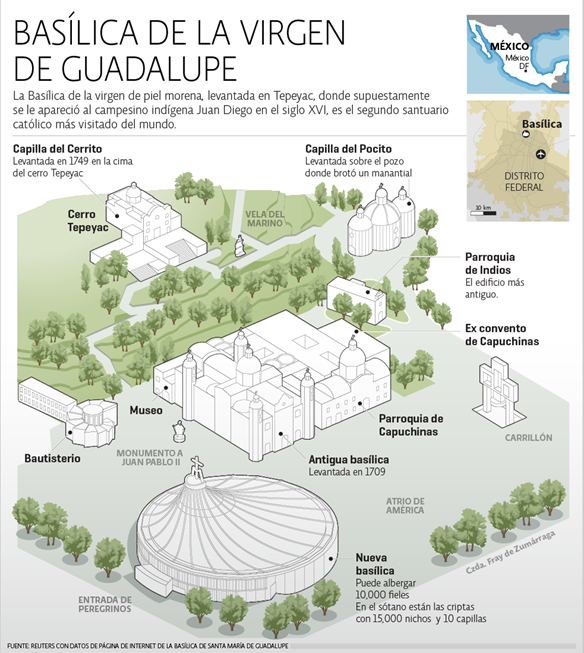 Map of the Basilica of the Virgin of Guadalupe (Mapa de la basílica de la Virgen de Guadalupe) Image
Map of the Basilica of the Virgin of Guadalupe (Mapa de la basílica de la Virgen de Guadalupe) Image
Articles consulted on the internet (Artículos consultados en internet):
*https://www.101viajes.com/ciudad-mexico/basilica-guadalupe
*https://www.turismomexico.es/mexico-df-ciudad-de-mexico/basilica-de-virgen-guadalupe/
*https://www.holyart.es/blog/articulos-religiosos/basilica-de-nuestra-senora-de-guadalupe-en-la-ciudad-de-mexico/
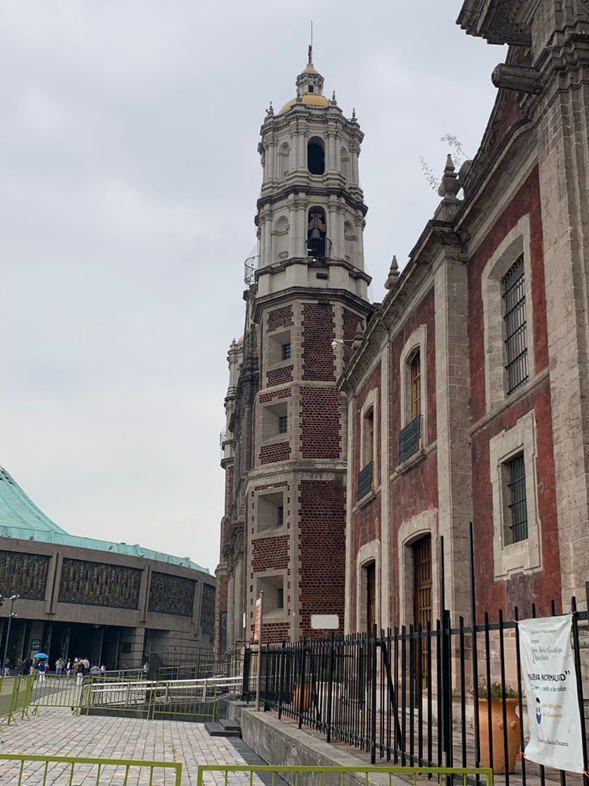 Another shot of the two churches of Guadalupe (Otra vista de las dos iglesias de Guadalupe). Photo taken by Darwin Palacios
Another shot of the two churches of Guadalupe (Otra vista de las dos iglesias de Guadalupe). Photo taken by Darwin Palacios








Dear @besamu, sorry to jump in a bit off-topic.
May I ask you to review and support the new proposal (https://peakd.com/me/proposals/240) so I can continue to improve and maintain this service?
You can support the new proposal (#240) on Peakd, Ecency,
Thank you!